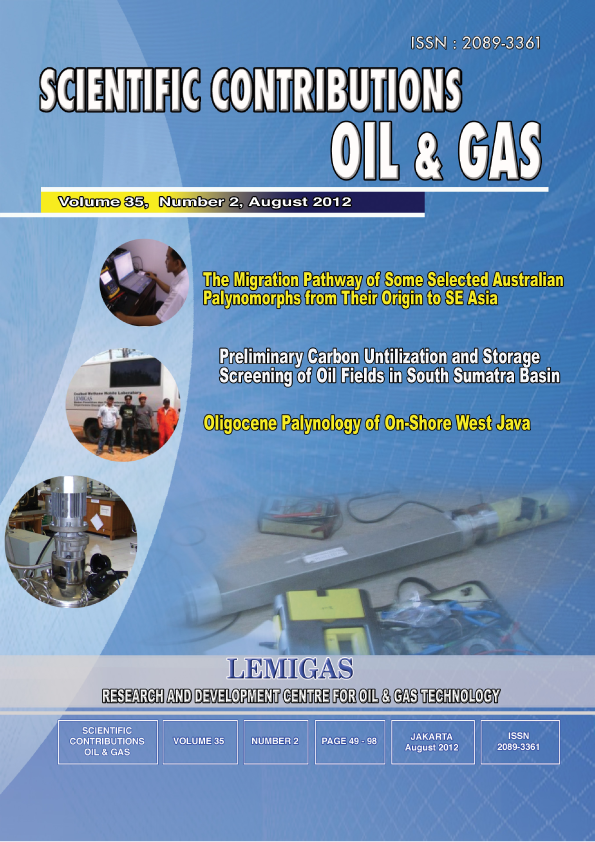Differenciating Oil, Gas And Water In Seismic Section Using Spectral Decomposition
DOI:
https://doi.org/10.29017/SCOG.35.2.780Keywords:
oil, water, gas, spectral decomposition, CWT, deep seaAbstract
Oil, Gas And Water Contained In The Pore Spaces Should Give Different Response In The Seismic Trace, But This Is Not An Easy Problem. However, From The Physical Point Of View Oil Is Quite Compressible, Gas Is Very Compressible And Water Is Incompressible, So In Principle They Should Give Different Response In Seismic  Record. Since The Response In The Time Domain Is Sometimes Complicated In Nature, An Effort Has Been Carried  Out To Remedy The Problem In The Frequency Domain. A Recent Advance In Signal Analysis Which Is Referred To As The Spectral Decomposition Has Been Used To Differentiate Oil, Gas And Water In Seismic Section. In This Case A Specifi C Method In Spectral Decomposition Called As The Continuous Wavelet Transform (CWT) Was Utilized For This Purpose. The Result Demonstrates That Oil, Gas And Water Can Be Differentiated Clearly In The CWT Spectrum Using The Data From The Deep Water Part In The Makassar Strait. The Results Are Encouraging.
Â
References
Castagna, J.S., Sun, Siegfi el d R, 2003, Instantaneous
Spectral Analysis : Detection of Low frequency
shadow associated with hydrocarbon, The Leading
Edge, February.
Castagna, J.P. and Sun, S., 2006, Comparison of
Spectral decomposition methods, First Break, vol.24,
pp.75-79.
Chopra, S. and Marfurt, K.,J., 2006, Seismic
attribute mapping of structure and stratigraphy, SEG
Distinguished Instructure Short course, series.Tulsa.
Hall, M., and Trouillot, E., 2004, Predicting stratigraphy
with spectral decomposition, Canadian SEG
National Convention.
Johann, P., and Spinola, M., 2003, Spectral
decomposition reveals geological hidden features in
the amplitude maps from deep water rese3rvoir in the
Campos Basin, Landmark Technical review, pp.75-
Kishore, M.,Sharma, S.,Kumar B. and Srivastava,
A., 2006. An approach to net thickeness estimation
using spectral decomposition, Geohorizons, January,
pp58-61.
Laughlin, K., Garossino, P. ad Partyca, G., 2003,
Spectral decomposition for seismic stratigraphic
patterns, Search and Discovery Article #400096.
Partyka, G.J., Gridley, and Lopez, J.A., 1999,
Interpretational applications of spectral decomposition
in reservoir characterization, The Leading Edge,
,pp.353-360.
Rojas, N.A., 2008, Spectral Decomposition applied to
elapse seismic interpretation at Rulison fi eld, Grafi eld
County, Colorado, Ph.D. Thesis Colorado School of
Mines, USA.
Sinha, S., Routh, P.,Anno,P., Castagna,J., 2005,
Spectral Decomposition of Seismic Data with
Continous Wavelet Transform, Conoco Research.
Stockwell, R.,G., Mansinha, L., and Lowe,
R.P.,1996, Localization of the complex spectrum : the
S-transform, IEEE Trans.Signal Process, vol.44, no.4,
pp.998-1001.
Suprajitno Munadi and Humbang Purba, 2009,
Spectral Decomposition made simple, LEMIGAS
Scientifi c contributions to Petroleum Science & technology,
Vol. 32, No.,2 , pp.94-102, August.
Downloads
Issue
Section
License
Copyright (c) 1970 SCIENTIFIC CONTRIBUTIONS OIL AND GAS (SCOG)

This work is licensed under a Creative Commons Attribution 4.0 International License.
Authors are free to Share — copy and redistribute the material in any medium or format for any purpose, even commercially Adapt — remix, transform, and build upon the material for any purpose, even commercially.
The licensor cannot revoke these freedoms as long as you follow the license terms, under the following terms Attribution — You must give appropriate credit , provide a link to the license, and indicate if changes were made . You may do so in any reasonable manner, but not in any way that suggests the licensor endorses you or your use.
No additional restrictions — You may not apply legal terms or technological measures that legally restrict others from doing anything the license permits.














